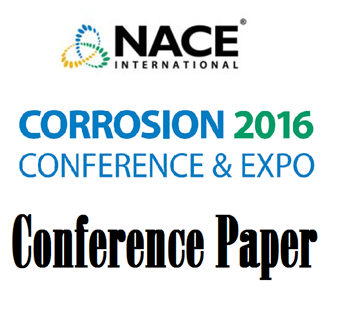Search
Test Method
View as
Sort by
Display
per page
02038 COMMON PITFALLS DURING SSC AND PITTING TESTING OF SUPERMARTENSITIC STAINLESS STEELS FOR USE IN PIPELINES
Product Number:
51300-02038-SG
ISBN:
02038 2002 CP
Publication Date:
2002
$20.00
02334 THE USE OF MULTIPLE REFERENCE ELECTRODES IN EN MEASUREMENTS
Product Number:
51300-02334-SG
ISBN:
02334 2002 CP
Publication Date:
2002
$20.00
03473 PROPOSED STANDARD CARBURIZATION TEST METHOD
Product Number:
51300-03473-SG
ISBN:
03473 2003 CP
Publication Date:
2003
$20.00
08003 A Correlation of Accelerated Corrosion Testing with Real Life Exposure After 6 Years in a Coastal/Offshore Environment
Product Number:
51300-08003-SG
ISBN:
08003 2008 CP
Publication Date:
2008
$20.00
51314-4159-Corrosion and Its Inhibition Under Iron Sulfide Deposits: Laboratory Testing Method Development
Product Number:
51314-4159-SG
ISBN:
4159 2014 CP
Publication Date:
2014
$20.00
51315-6035-Validation of New Test Facility for Erosion-Corrosion Inhibition Prediction
Product Number:
51315-6035-SG
ISBN:
6035 2015 CP
Publication Date:
2015
$20.00
51316-7055-Are You Trained Certified and Qualified to Assess Corrosion and Related Defects?
Product Number:
51316-7055-SG
ISBN:
7055 2016 CP
Publication Date:
2016
$20.00
51316-7126-Qualification of Super 13Cr-110 in HPHT Sour Well Service with Concentrated Brines
Product Number:
51316-7126-SG
ISBN:
7126 2016 CP
Publication Date:
2016
$20.00
51316-7198-Comments on ASTM G48
Product Number:
51316-7198-SG
ISBN:
7198 2016 CP
Publication Date:
2016
$20.00
51316-7287-Phenomenal Pitting Corrosion on Coating Damaged Surface of Automobile Suspension Coil Springs
Product Number:
51316-7287-SG
ISBN:
7287 2016 CP
Publication Date:
2016
$20.00
51316-7304-Evaluation of Protective Coating Performance in a Cyclic-Temperature Environment
Product Number:
51316-7304-SG
ISBN:
7304 2016 CP
Publication Date:
2016
$20.00
51316-7312-Changes in Test Methodology to Reflect the Changes Within the Oil and Gas Linings Market
Product Number:
51316-7312-SG
ISBN:
7312 2016 CP
Publication Date:
2016
$20.00












